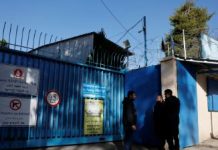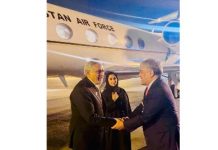Qamar Bashir
Former Press Secretary to the President
Former Press Minister to the Embassy of Pakistan to France
Former MD, SRBC
The economy of Pakistan has, for the entirety of its existence, followed a pattern of both growth and decline with very few deviations from this scheme, with one constant: as soon as successive governments on the strength of higher economic growth starts pursuing policies in greater national interest, the external factors in collusion with the internal factors had been fomenting political, constitutional, and legal crisis, had been discrediting the politicians, judiciary or establishment whosoever had not been on their right side, and the economy suffered from sudden free fall and collapses like a house of cards with similar outcome; worsening of balance of payment, dwindling foreign reserve, debt burden and higher inflation followed by replacing the existing regime with a new one and keeping the new regime floating as long as it behaves otherwise, the process of change the regime will set in all over again starting with strangulation of the economy. This is analogous to a snake that has its tail in its mouth or the bull of Roman well, which keeps on moving in circles endlessly. The never-ending circus, which began since inception of Pakistan and continues unabated even today, demonstrating time and again how dependent our very existence is on factors from the outside world and their local facilitators and also manifest the fragility of our state and lack of our sovereignty to make independent decisions critical for development of our country and the prosperity of our people.
In the immediate aftermath of World War II, the United States launched the Marshall Plan to distribute aid to European and Asian nations including the newly born state of Pakistan which helped it to stabilize its economy between 1947 and 1958. It helped in building up foreign reserves critical for its survival. This plan also helped the country to build its ragtag army to strengthen it enough to counter and contain the perceived threat posed by communist nations in the region. This alignment also helped the country to tap the Commonwealth of Nations coffer to gain access to preferential trade agreements, attract investment and tap resources from other Commonwealth of Nations member countries. However, as US interest in Pakistan grew and political leadership refused to bend as needed, the US government decided to replace the politicians with a single yes man with whom they could negotiate with ease and comfort. To achieve this goal, they used the tried-and-true strategy of undermining political leaders’ credibility, causing a political, legal, and constitutional crisis, and economically and financially suffocating the nation. A country that had been experiencing robust economic growth suddenly began to face a large trade deficit, dwindling foreign exchange, a precarious balance of payments situation, higher debts, and high inflation, resulting in a steep freefall of the economy and followed by regime change which continued until Pakistan was dismembered in 1970.
The new cycle began with the installation of Ayub Khan in power with a deteriorating economy and a growth rate of 1.5% after his alignment with the West, which enabled it to finance a number of development projects and boost economic growth to over 6.7% with the sole purpose of creating a bulwark against the USSR’s expansionist agenda. However, when he went to war against India against the wishes of the US, he not only lost the war but also his ability to remain in power. The cycle of regime change began with allegations of corruption, rising inflation, and discrediting him as a leader, followed by a sudden collapse of the economy characterized by time-tested symptoms of decreasing exports, a loss of foreign exchange, an increase in the fiscal deficit, higher inflation, and a precarious balance of payments situation, bringing the leadership, the country, and its people to their knees to the point where they lost their sense of sovereignty. The ruthless removal of Ayub Khan from power paved the way for Zulfiqar Ali Bhutto’s enthronement with half of Pakistan, while the other was lost to India.
Mr. Bhutoo inherited a shattered Pakistan, a demoralized army with over 100,000 war prisoners, a dejected wounded and grieving nation, and an economic growth rate of -0.19%. He calmed the nation’s nerves, rebuilt the army, and focused on nationalization of industries and socialist policies, eventually rescuing the country from an economic nightmare and achieving 6.78% growth in fiscal year 1975-76. His independent policy, including his decision to pursue nuclear weapons, drew international condemnation and sanctions. Pakistan’s international isolation was exacerbated by the government’s poor relations with neighboring countries such as India and Afghanistan. As a general rule, political unrest was fomented, charges of corruption, amassing wealth, and moral bankruptcy were leveled, the leadership was discredited, civil unrest began, and the economy plummeted, laying the groundwork for regime change, and Bhutto was replaced by Zia-ul-Haq.
Zia ul Haq inherited a high rate of inflation, a large fiscal deficit, and a balance of payments crisis, with dwindling foreign exchange reserves and an increasing debt burden, as in previous cases. However, once he agreed to make the country a battleground between the USSR and the US, and sided unambiguously with the US, he became a Western darling, and the economy soared. As a reward for his assistance in countering Soviet influence in the region, the United States provided significant economic and military assistance to pursue development projects, expand the manufacturing sector, attract significant foreign investment, and reschedule external debt by international lending institutions led by the International Monetary Fund (IMF), resulting in an economic growth rate of 7% in 1987-88. However, once he began asserting himself and treating the West and the US as fools, he fell out of favor with the West and the US for pursuing the nuclear program and supporting the Talibans, which displeased the masters. He was punished with sanctions and strangulations, and the economy’s growth rate of 7% was down to the ground along with sovereignty and national interests, and the stage was set for regime change.
Though Benazir Bhutto’s governments from December 1988 to August 1990 and October 1993 to November 1996 inherited a shattered economy, she was able to boost economic growth to 6.6% in fiscal year 1994-95. However, her unwavering pursuit of Pakistan’s nuclear program became the impetus for her removal from power, based on time-tested allegations of corruption, nepotism, mismanagement, and abuse of power.
During his first two terms, Nawaz Sharif was also able to boost the economy to a 6.9% growth rate in fiscal year 1991-92 and a 6.8% growth rate in fiscal year 1996-97. He was removed not because of defamatory allegations of corruption, mismanagement, and nepotism, but because of his de facto refusal to cave in to external pressure to abandon Pakistan’s nuclear program. Nawaz Sharif’s last term was even more significant. First, despite enormous external pressure, he was able to see that the atomic bomb testing resulted in a positive shift in the country’s security paradigm. In the late 1990s and early 2000s, both the United States and Western powers were concerned about Pakistan’s role in supporting Islamic militant groups. They were particularly concerned about Pakistan’s support for the Taliban regime in Afghanistan, as well as its links to other extremist groups such as Lashkar-e-Taiba and Jaish-e-Mohammed, which were responsible for terrorist attacks in India and Kashmir. The United States pressed Pakistan to crack down on them but Nawaz Sharif’s inability to comply was seen as not being cooperative enough resultantly, the relations deteriorated with the United States imposing economic sanctions and reducing military aid to Pakistan. Nawaz Sharif’s government was also chastised for its nuclear program and for failing to prevent the Kargil War in 1999 between India and Pakistan. This was the time for regime change, with the usual repetition of entire protocol, discrediting the leadership, allegations of corruption and nepotism, followed by complete economic collapse and setting the stage for regime change this time by a novel idea of removing the government on charges of hijacking an airplane by Nawaz Sharif while he was sitting in his office in Islamabad.
As in the past in similar situation, Musharaf inherited a deteriorating economy in 1999, and, like Zia ul Haque, he promised USA to take a tougher stance against Islamic militants and to do whatever it takes to counter the Islamic Jehadi groups and terrorists and Talibans, besides controlling the speed of country’s nuclear program. As a result of his assurances, he became a key ally in the US-led “war on terror” following the 9/11 attacks, and his government received significant military and economic aid from the US. The influx of plentiful aid provided him with enough fuel to continue ruling the country for ten years until he began asserting himself in the name of so-called national interest. More specifically, he fell out of favor due to his inability to prevent ISI from cultivating Talibans and other militant groups, as well as his turning blind eye to the selling of nuclear technology to Iran, North Korea, and Libya. In defiance of the United States, he began pursuing Pakistan’s strategic interests and tried to balance its relations with the United States and other powers, arguing that too much cooperation with the United States could undermine Pakistan’s regional influence. His miscalculation was that if US aid dwindled, other powers would rush to his aid. His sense of national pride was unacceptable to the US and the West, and thus it was time for a regime change.
Exactly, like all previous cases Yousaf Raza Gilani took over as Prime Minister in 2008, he inherited dilapidated state of the economy with usual symptoms of high inflation, a large fiscal deficit, rising debt levels, a weak currency, and additionally a an energy crisis of mammoth proportion. Like all other cases, the USA came to the rescue in lieu of promises for extending all out assistance to fight against terrorism and taking tangible and verifiable steps to stop nuclear proliferation. The International Monetary Fund (IMF) and the World Bank led the economic support by providing a loan of $7.6 billion in November 2008 followed by other support and loan after his government conducted a successful operation in Swat in 2009. However his honeymoon period was over soon after the 2011 killing of Osama bin Laden by U.S. forces in Pakistan and accusation that the government of Pakistan was sheltering bin Laden, the MemoGate scandal added fuel to fire, Pakistan’s alleged support for militant groups, the US drone strikes in Pakistan were the raison d’etre for ouster of Yousaf Raza Gilani.
Exactly, as in all previous regime change scenarios when Nawaz Sharif took over the economy was facing the same symptoms of high inflation, Energy crisis, Budget deficit, balance of payment issue, current account deficit widening, foreign exchange reserves falling to dangerously low levels and a very high unemployment rate. In lieu of the promises to the US as a regional ally, and providing all out assistance to USA in counter terrorism in the context of the US-led war on terror in Afghanistan and non pursuance of nuclear weapon systems, the economic aid started pouring. The IMF provided a $6.6 billion loan in 2013 and the West provided Generalized System of Preferences (GSP) Plus status to Pakistan in 2014, which allowed Pakistani exports to enter the EU market at preferential rates which helped to boost Pakistan’s exports and improve the balance of payments. This helped Nawaz Sharif’s government to finally achieve a growth rate of 5.8% in the fiscal year 2017-2018, the highest growth rate in 13 years. He was disfavored by the USA for Pakistan’ alleged support to militant groups, including the Afghan Taliban and the Haqqani network, which were responsible for attacks on US and coalition forces in Afghanistan. The US government urged Pakistan to take action against these groups, but the Nawaz Sharif government was perceived as being hesitant to do so. USA was also concerned about Pakistan’s nuclear weapons program and its potential for nuclear proliferation but Pakistan refused to oblige USA, besides his pursuance of CPEC was one of the charge sheets against Nawaz Sharif which was seen as potential threat to its interests in the region and raised concerns about its security implications. The economy took a nosedive, and crashed on the ground indicating that the time for Nawaz Sharif in power was over.
When Imran Khan took over as the Prime Minister in August 2018, he inherited an acute balance of payments crisis, a widening current account deficit, declining foreign exchange reserves, high debt level, high inflation, energy crisis and whooping unemployment rate. The USA and the West once again came to the rescue and in lieu of help to US and Western efforts to combat terrorism and promote stability in Afghanistan, Pakistan received $6 billion loan package by IMF in 2019, the World Bank provided financial support to Pakistan for a range of development projects, including infrastructure, health, education, and social protection. In 2020, the World Bank approved a $450 million loan for Pakistan to help improve the country’s energy sector. In 2020, the ADB approved a $1.3 billion assistance package for Pakistan to help mitigate the impact of the COVID-19 pandemic which helped the government to achieve around 6% GDP growth rate in 2021-22 which surprised even his hardest critics. But his few words absolutely not, while replying to a question whether Pakistan would give the USA bases for action in Afghanistan coupled with termination of drone surveillance facility and taking over all bases from USA in Pakistan and pursuing good relations with Russia and Iran were enough charge sheets to strangulate Pakistan financially and economically. The economy nose dived and the regime was changed and as in all the previous cases, the new government of Shahbaz Sharif inherited almost depleted foreign reserves, weekend Rupee, hyperinflation, acute balance of payment issue, high unemployment rate and low exports. The government has been brought to its knees to the point where it is ready to accept any conditionality or make any promise whether in national interest or otherwise to secure foreign aid which has started trickling in and the economy is showing some sign of life but is still in the ICU.
We have no choice but to break these vicious circles by building wealth-generating machines if we want to make independent sovereign decisions, earn respect, dignity, and honor, and make our country and nation strong and vibrant. Human resources, which we have plenty of, are the most efficient, powerful, and long-lasting machines. Our human resources are still from the Stone Age. In comparison to the rest of the world, which is leapfrogging forward by developing sophisticated technologies ranging from household to space exploration with the help of supercomputers, quantum computers, and ever-improving artificial intelligence, they still have hammer and chisel in hand, and as a result, instead of wealth-generating machines, they are the biggest liability. We must develop master trainers in all areas of life, finding ways to transfer education, knowledge, skills, and social and communication skills using information technology and distance learning in conjunction with hybrid learning and artificial intelligence based learning, and providing them with launching pads to sell their acquired knowledge, skill, and expertise to the country and the rest of the world in the shortest time possible.
We need to break these vicious circles by making Pakistan irrelevant in terms of international conflict and issues and relevant only in terms of socioeconomic cooperation, so that there are fewer distractions and more resources to focus on national building efforts while maintaining constructive relationships with other countries and participating in international cooperation efforts, such as trade treaties and joint initiatives to address global challenges such as climate change and paternalism.
Several countries have successfully rendered themselves strategically irrelevant by making sustained efforts to address the underlying causes of the country’s economic challenges. They have strengthened institutions, increased transparency, and ensured accountability for those who engage in corrupt practices, creating the enabling conditions needed to improve the business climate and attract foreign investment. They have encouraged a vibrant private sector, which is critical for job creation and economic growth, while the government has aided private sector development by creating a business-friendly environment, investing in infrastructure, and increasing credit availability.
They have encouraged innovation and entrepreneurship, which has resulted in the creation of new industries and jobs, while the government has supported these efforts by providing training and mentorship programs, establishing incubators and accelerators, and providing tax breaks to startups.
They have invested in education and healthcare, which has increased the workforce’s productivity and skills, making it more competitive in the global economy. They have promoted regional trade and connectivity, which has helped to unlock new economic opportunities and reduce the country’s reliance on any single market.
We must break the vicious circle of seeking foreign aid, which can only provide short-term relief and support to a country, but our complete reliance on foreign aid is impeding our country’s ability to build an economy that is robust and sustainable. We can do this by focusing on developing our own resources and industries to achieve long-term economic stability and independence.

















